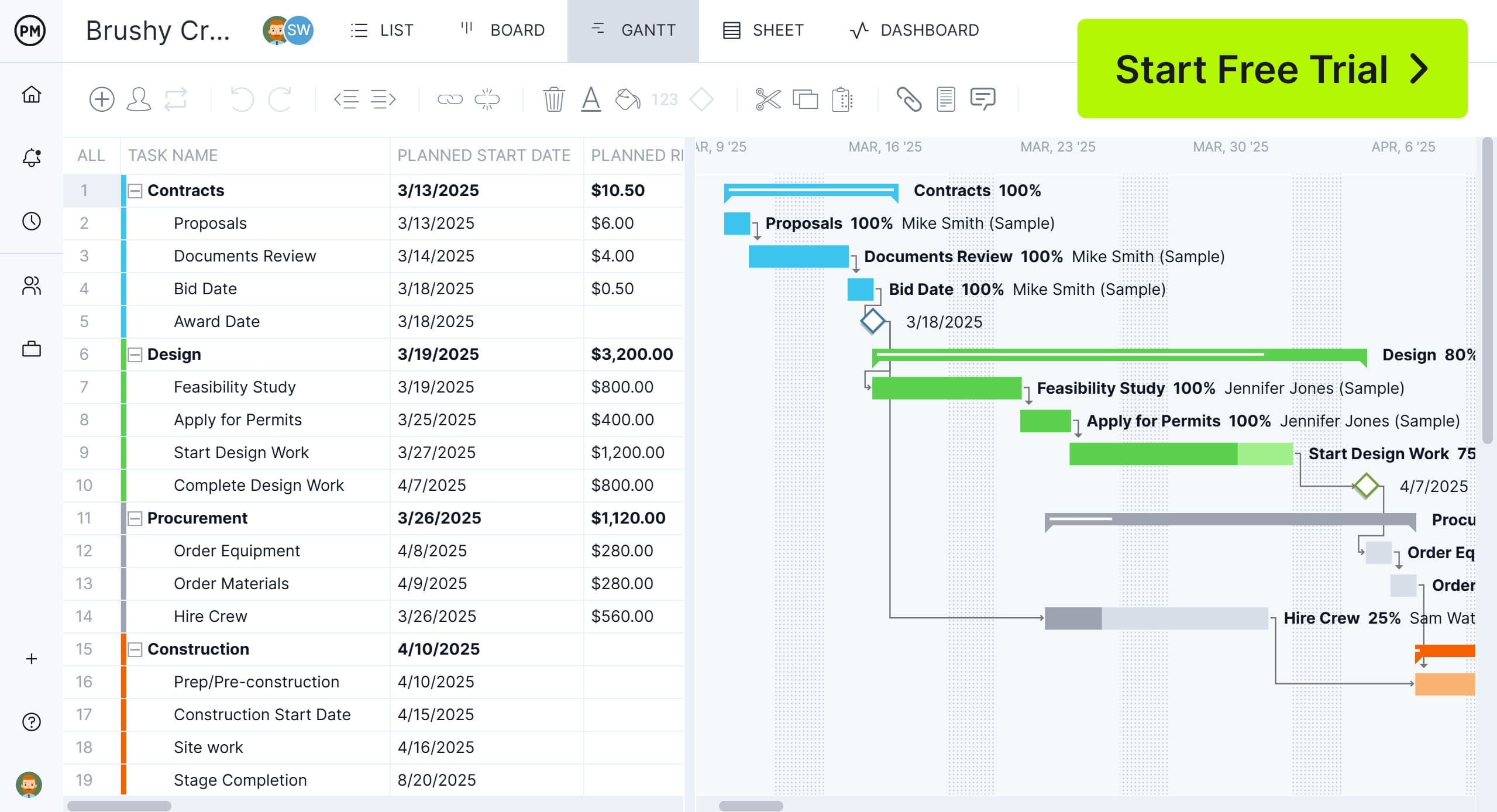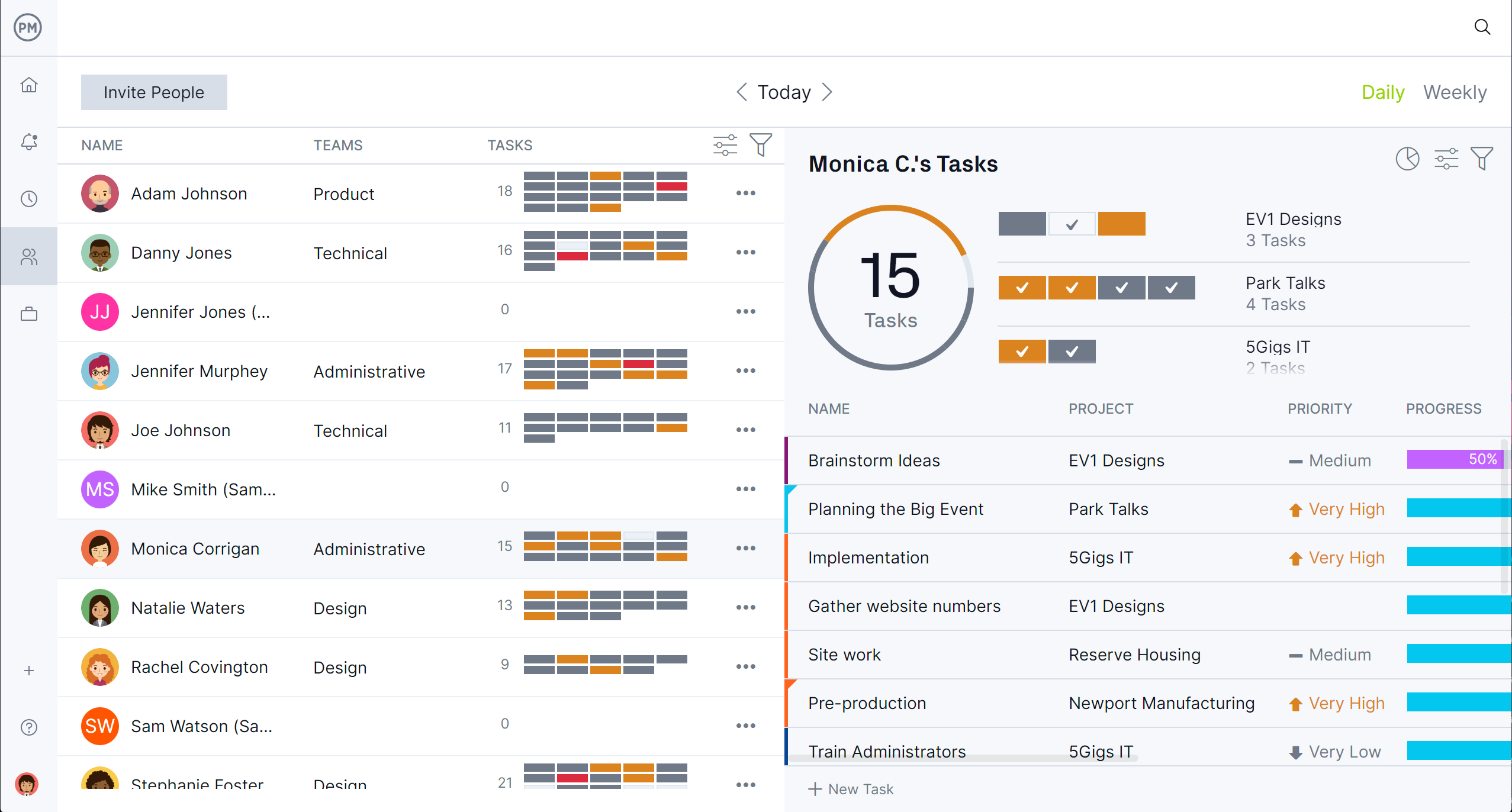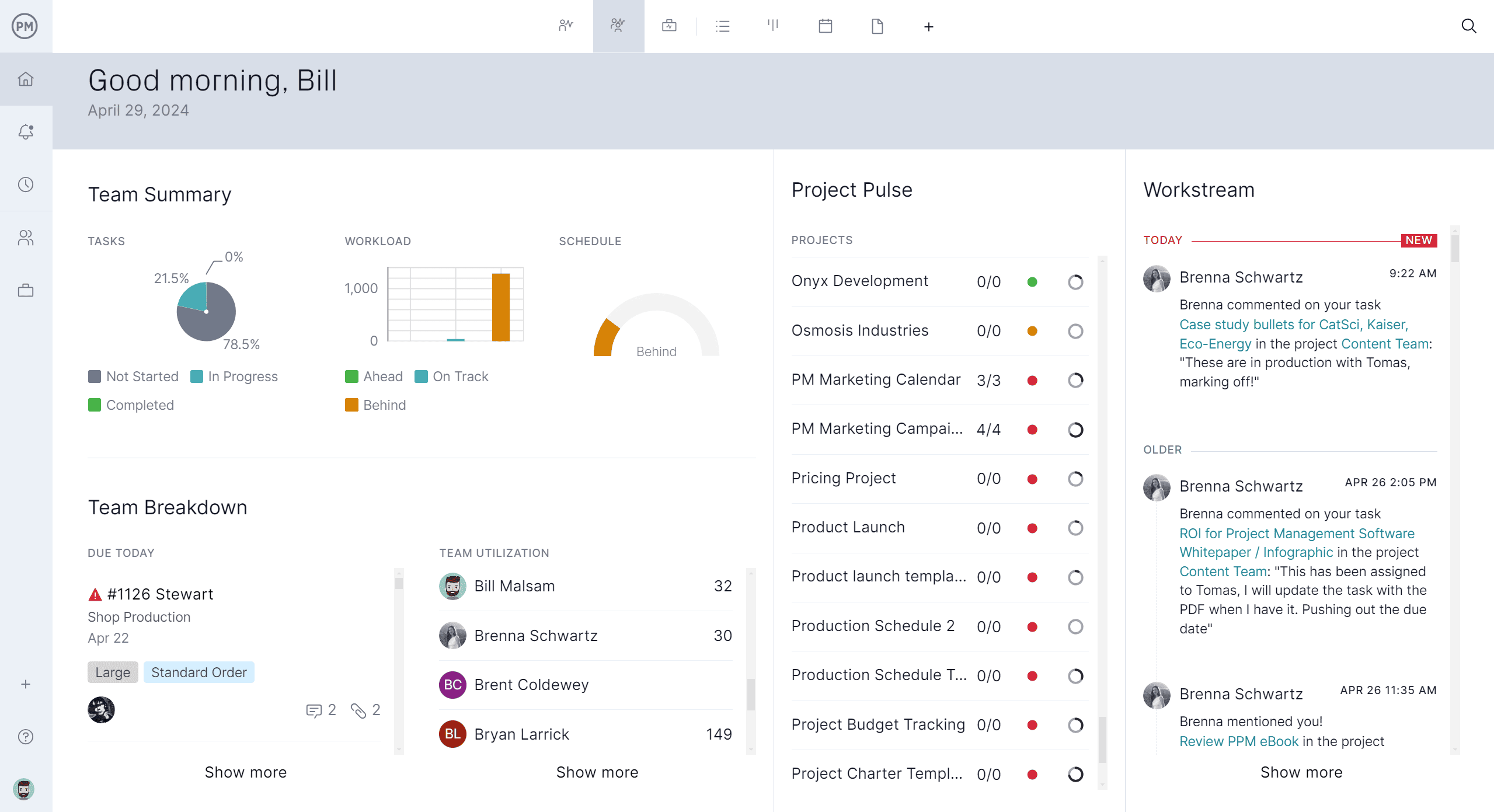Creating an IT strategic plan is a vital step for organizations looking to align their technology initiatives with broader business goals. As technology continues to evolve, having a clear, forward-looking strategy ensures that IT investments support long-term growth, efficiency and competitiveness.
We’ll explore what an IT strategic plan is, how it fits into IT strategic planning, what should be included in the plan and who’s responsible for it. Whether an organization is scaling operations, improving cybersecurity or integrating new systems, an IT strategic plan provides a structured approach to decision-making and resource allocation.
What Is an IT Strategic Plan?
An IT strategic plan is a comprehensive document that outlines how an organization’s technology initiatives will support and advance its overall business goals. It serves as a roadmap for aligning IT infrastructure, applications and services with the company’s vision, mission and operational priorities. The plan typically covers a multi-year timeframe and addresses areas such as digital transformation, cybersecurity, data management and systems integration.
At its core, an IT strategic plan helps organizations prioritize technology investments, manage resources effectively, and ensure that IT activities are reactive to current needs and proactive in anticipating future demands. It includes clear objectives, performance metrics and timelines to guide implementation and track progress. Stakeholder alignment is also a key component, as collaboration between IT leaders and business executives is critical for a plan’s success.
A well-structured IT strategic plan also promotes transparency and accountability, providing teams with a unified direction and reducing the risk of misaligned or redundant initiatives. As technology plays an increasingly central role in business operations and customer engagement, an IT strategic plan becomes essential for driving innovation, maintaining competitiveness and managing technological change in a controlled, strategic manner.
An IT strategic plan informs a Gantt chart by providing the foundational objectives, initiatives and timelines that drive the scheduling and sequencing of tasks within a project. The strategic plan outlines long-term goals and key IT priorities, such as system upgrades, cybersecurity improvements or digital transformation projects. These strategic directives are broken down into actionable projects and milestones, which are then plotted on a Gantt chart to visualize when and how each component will be executed.
ProjectManager is award-winning project and portfolio management software that has robust Gantt charts that can turn an IT strategy plan into an actionable schedule. It sequences tasks, resources and costs, but more than that can also link all four types of task dependencies to avoid cost overruns and bottlenecks. Our Gantt can quickly filter for the critical path and set a baseline to track progress in real time to help the strategic plan meet its deadline. Get started with ProjectManager today for free.

What Is IT Strategic Planning?
IT strategic planning is the process of defining an organization’s technology direction in alignment with its overall business goals. It involves setting long-term objectives for IT systems and services, identifying the technology initiatives needed to support those goals and creating a roadmap for implementation. The goal is to ensure that IT investments and resources are used effectively to drive business value, improve operations and support innovation.
This planning process typically includes assessing the current IT environment, analyzing emerging technologies and trends, identifying gaps or inefficiencies and prioritizing projects that will deliver the most strategic benefit. IT strategic planning is essential for helping organizations stay competitive, adapt to change and ensure that their technology infrastructure evolves in a way that supports future growth and transformation. This leads to the creation of an IT strategic plan.
What Should Be Included in an IT Strategic Plan?
Now let’s look at how to make an effective IT strategic plan. It serves as a blueprint for how an organization’s technology initiatives support its overall business strategy. To ensure clarity and direction, the plan should be comprehensive and structured, covering the current state of IT and the future vision. Here’s what to include.
- Executive Summary: This brief overview highlights the purpose of the plan, key objectives and major initiatives. It offers stakeholders a snapshot of what the strategy aims to achieve.
- Assessment of Current IT Environment: Analyze existing IT infrastructure, systems, processes and capabilities. This assessment should identify strengths, weaknesses, gaps and areas for improvement.
- Business Goals and IT Alignment: Show how IT will support and enable business objectives. This ensures that business needs drive technology investments.
- IT Vision and Mission: Define the IT department’s long-term vision and its guiding mission. This anchors all initiatives in a shared sense of purpose.
- IT Governance: Outline the structure, roles and processes used to make IT decisions, manage priorities and ensure compliance with policies and standards.
- Risk Management Plan: Detail the key IT risks (e.g., cybersecurity compliance) and mitigation strategies. Proactive risk management is vital for business continuity.
- IT Roadmap: Include a high-level timeline of strategic initiatives, showing when key systems and technologies will be implemented or upgraded.
- IT Capability Requirements: Identify the resources, skills and technologies needed to execute the plan. This may include staffing needs, new tools or training.
- IT Budget: Provide a financial forecast of IT spending related to the plan. This should include capital investments, operating costs and projected returns on investment.

Key IT Strategic Planning Roles
Successful IT strategic planning relies on the collaboration of key stakeholders who bring diverse perspectives and expertise to align technology with business objectives. Each role contributes specific leadership, insight and accountability to ensure the strategy is visionary and executable. Here are four core roles in IT strategic planning.
Chief Information Officer (CIO)
The CIO leads the IT strategic planning process, setting the vision and direction for the organization’s technology landscape. They work closely with executive leadership to align IT priorities with business goals, assess current capabilities and champion innovation. The CIO also oversees the implementation of the strategic plan, ensuring it drives measurable value and business transformation.
IT Strategy Manager
The IT strategy manager translates the CIO’s vision into actionable initiatives and frameworks. They coordinate planning activities, conduct market and internal assessments and develop roadmaps. This role is instrumental in analyzing data, managing stakeholder input and ensuring that the strategy remains aligned with technological trends and business demands over time.
Executive Sponsor
Typically, a member of the senior leadership team, the executive sponsor provides high-level support and ensures cross-departmental alignment. They advocate for IT initiatives at the executive level, secure funding and help remove organizational barriers that could hinder strategic implementation.
IT Infrastructure Manager
This individual assesses the current IT architecture and infrastructure to determine what upgrades or changes are necessary to support strategic goals. They ensure that the foundation of the IT environment—networks, servers, storage and cloud services—can support current needs and future growth outlined in the plan.
IT Strategic Planning Best Practices
Effective IT strategic planning isn’t just about crafting a visionary document—it’s about creating a practical, actionable guide that drives measurable impact. To ensure success, organizations should follow best practices that enhance the plan’s relevance, buy-in and long-term value.
Create a Realistic Plan Based on Resource Availability
An ambitious IT strategy can fall short if it overlooks the constraints of time, budget and personnel. Building a realistic plan means aligning goals with the actual resources available. This includes evaluating internal capabilities, existing infrastructure and budget allocations before defining project scope and timelines. By grounding the plan in reality, organizations can avoid overextension and increase the likelihood of successful execution.
Involve Key Stakeholders in the Planning Process
IT strategic planning isn’t just an IT function—it must reflect the needs and priorities of the entire organization. Engaging department heads, end users, finance, operations and executive leadership fosters collaboration and ensures the plan supports broader business goals. Early stakeholder involvement also builds commitment and surfaces potential risks or opportunities that may not be visible to IT alone.
Establish KPIs and Measurement Tools
A strategic plan without clear performance indicators is difficult to manage and improve. Establishing key performance indicators (KPIs) and selecting the right measurement tools allows leaders to track progress, assess ROI and make data-informed adjustments. Regular performance monitoring ensures the strategy remains on course and adapts to evolving business needs.
Free IT Management Templates
While project management software is an ideal fit for making an IT strategic plan, for those not ready to upgrade, there’s a workaround. Our site features over 100 free project management templates for Excel and Word that cover all aspects of managing projects across multiple industries. Below are just a few that can help with IT management.
IT Project Plan Template
Open this free IT project plan template in ProjectManager to outline the critical elements of an IT project. It serves as a comprehensive planning tool that organizes the project’s scope, objectives, timeline, resources, tasks and risk management strategies. This is particularly useful for standardizing project planning across teams and ensuring consistency in execution and communication.
IT Risk Assessment Template
Download this free IT risk assessment template for Excel to identify, evaluate and document potential threats to an organization’s information technology systems, data and operations. It provides a consistent framework for analyzing risks, assessing their impact and likelihood and planning mitigation strategies to reduce vulnerabilities.
Service Request Form
Use this free service request form for Excel to formally capture and manage requests for services from users or customers within an organization. These services can range from IT support (like password resets or hardware requests) to maintenance, HR or facility needs.
How ProjectManager Helps With IT Projects
Why do we keep pushing project management software over templates? Simply because templates are helpful, but they’re not designed for managing projects, especially ones as complex and ever-changing as an IT strategic plan. No one wants to stop what they’re doing to manually update a template, and don’t get us started with its limited collaboration.
ProjectManager is award-winning project and portfolio management software that gives IT managers and their teams multiple project views, which means they can choose between Gantt charts, kanban boards, sheet, task and calendar views to do their work. This connects cross-functional teams, while updating their work in real time, which adds efficiency unheard of from templates.
Get Visibility and Allocate Resources in Real Time
Real-time visibility into resource availability and workloads helps IT leaders allocate the right personnel, hardware and software resources to priority initiatives outlined in the IT strategic plan. Team availability can be set when onboarding the team, while the color-coded workload page shows who is overallocated or underutilized so IT project managers can balance their team’s workload and keep them productive. A team page offers a daily or weekly summary of their activities and can be filtered by priority or progress. Tasks can even be updated without leaving the page.

Track Time, Budget and Progress With Live Dashboards and Reports
With integrated timesheets and budget tracking, IT teams stay within the financial boundaries established in the IT strategic plan. Managers can monitor actual resource usage and expenditures against forecasts to ensure strategic initiatives are progressing cost-effectively on project and portfolio, real-time dashboards.
Customizable reports go deeper into the data and can be filtered to focus on specific information or provide stakeholders with a general overview of progress.

Related IT Management Content
An IT strategic plan is part of the larger IT management process. For readers who care to learn more about this subject, click on the links below. They cover everything from an extensive overview of the topic to more specific pieces on requirements gathering and budgets.
- IT Project Management: The Ultimate Guide
- Burndown Chart: What Is It, Examples & How to Use One for Agile
- How to Become an IT Project Manager: Career Paths, Resume Tips & More
- Requirements Gathering: The Process, Best Tools & More
- What Is an IT Budget? IT Budgeting Basics (Template Included)
ProjectManager is online project and portfolio management software that connects teams whether they’re in the office or out in the field. They can share files, comment at the task level and stay updated with email and in-app notifications. Join teams at Avis, Nestle and Siemens who use our software to deliver successful projects. Get started with ProjectManager today for free.



